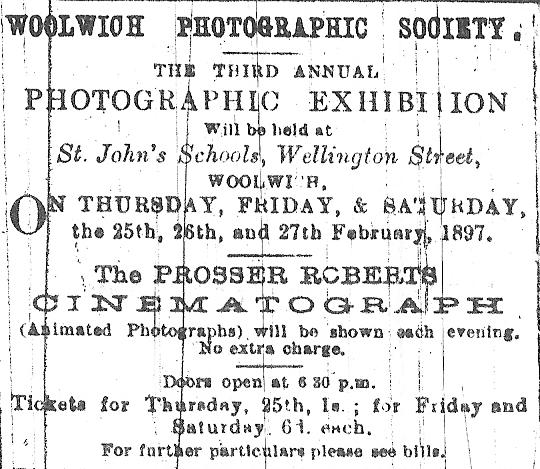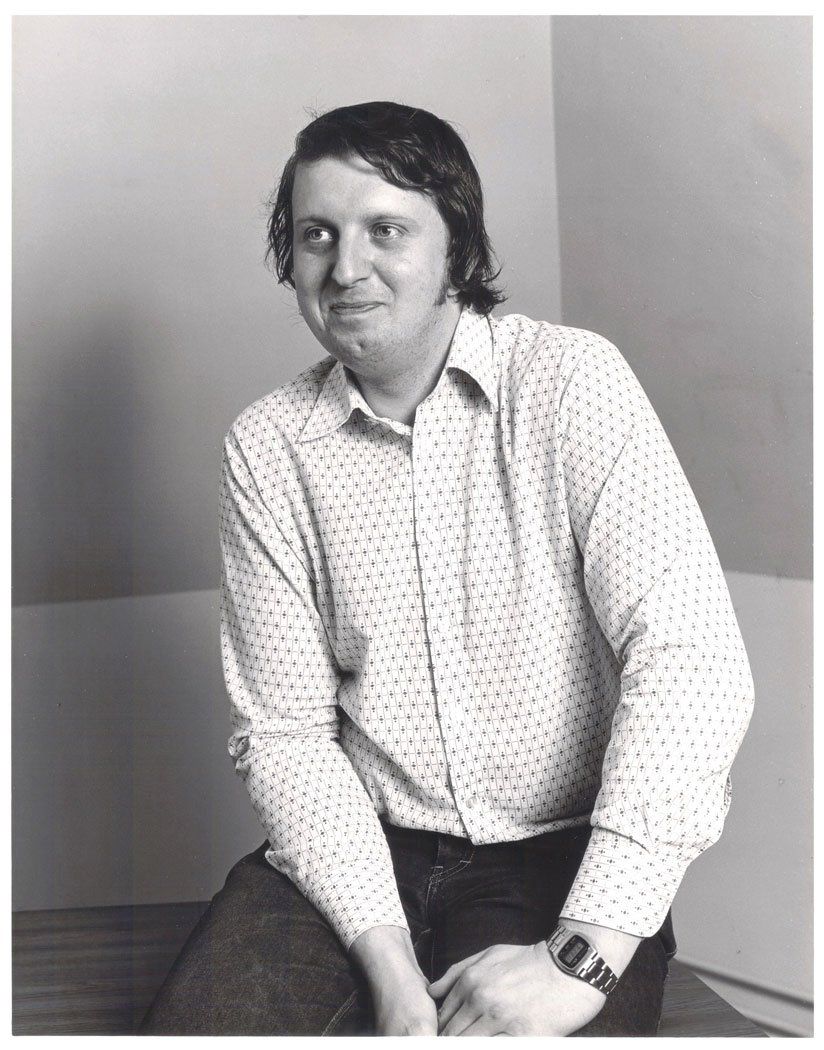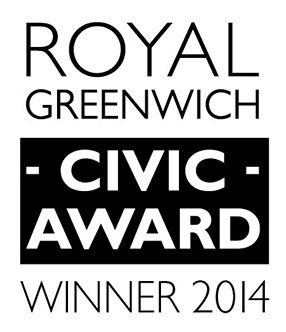Early development
We know, from newspaper cuttings and an advert for an 1897 photographic exhibition (see above),
that the early meetings of Woolwich Photographic Society were held at St. John’s School, Wellington Street, Woolwich. After 1925 the HQ moved to Old Woolwich Town Hall, in Calderwood Street/Polytechnic Street, the still existing building shows the date 1842, incidentally, this was already the second Town Hall in Woolwich. Meeting were postponed during WWII (1939 to 1945). After the war the first 3 meetings were held in Welling Library, later in 1945 they moved to Woolwich Methodist Church. In 1950 they met at Plumstead Library until September 1963, when the Society moved to Woolwich Adult Education Institute, Burrage Road, Plumstead.
In 1973, while still holding main meetings at the Woolwich Adult Education Institute, WPS began to use the old WWII bombshelter annex in the grounds of Shrewsbury House Community Centre as a photographic studio and around 1979 they began to hire room 13 (at one time a bathroom) at Shrewsbury House as a darkroom. In June 1980 they upped sticks yet again and relocated meetings to The Clockhouse Community Centre in Woolwich Dockyard and then in August 2000, the society moved all operations to our current home at Shrewsbury House.
The Society has been affiliated to various bodies, including, The Royal Photographic Society, Greenwich Arts Council, Greenwich Community Council, (through this body we acquired the studio space in the SH annex). Shrewsbury House Community Association, Clockhouse Community Recreation Centre, Affiliated to the Photographic Alliance of Great Britain though the Central Association of Photographic Societies (London and South Eastern Federation). The Kent County Photographic Association (KCPA) and the Federation of South London Photographic Societies (SLF). I am sure this is not a complete list, but it provides an overall picture.
Over the years the Society held regular internal competitions, many appraised by visiting judges. They also competed with other Photographic Societies, Camera Clubs and groups such as Bexleyheath, Dartford, Blackheath & Goldsmiths, South Suburban, Sidcup, Stepney, Greenwich (which became ‘Aperture’ and later merged with WPS to become Aperture Woolwich Photographic Society). Today AWPS compete in annual inter-club competitions organised by the The Federation of South London Photographic Societies (SLF) and the Kent County Photographic Association (KCPA).
By 1897 WPS had held 3 public exhibitions and over the years prints and slides have been on display at various locations in the borough, including the Victoria Hall (Woolwich Town Hall), the foyer of Shrewsbury House, and in recent years AWPS have exhibited regularly at The Queen Elizabeth Hospital, Mycenae House and Charlton House.
Guest speakers showing their work at the club have included the ex-BBC DJ
‘DLT Hairy Cornflake’
Dave Lee Travis, and
Sam Haskins. Here thanks must go to our various Programme Secretaries over the years for inviting some people you would never expect to see at camera-club level.
Focusing on change
By 2005 photography had undergone a major technical revolution moving in just a few years from film to digital. Woolwich Photographic Society like many other camera clubs, were presented with a stark choice; either embrace digital photography or get left behind. This wasn’t as easy a decision as you might imagine. Camera Club members had decades of experience in shooting film and in perfecting their darkroom skills, and digital presented a brand new set of problems and learning curves that many amateur and hobbyists photographers found considerably challenging. Some clubs simple refused to acknowledge that digital had any relationship to photography and rather than adapt to change they took the nuclear option of dissolution and closed their doors forever.
By 2008 Membership of the WPS was in serious decline (for reasons discussed above) but rather than go under, they decided to confront the problem full-on, to embrace digital photography and relaunch the club. They underwent a complete restructure and rebranding. The name was changed to Aperture
Woolwich Photographic Society (AWPS), they launched an extensive marketing campaign in local newspapers and on social media. The results were astonishing, in just over a year Membership grew from under a dozen to over 60. Today almost all the club’s membership is generated from the local community and comprises of a diverse range of people spanning the spectrum of age, ethnicity and profession. New members who discover the club - through local advertising, the society's website, social media or word-of-mouth are encouraged to join in with the club's activities from their very first meeting. Competitions are still a large part of the club’s activities but there is now a lot more focus on practical aspects of camera technique and computer-based digital image processing, learning ‘how to see’ and sharing what we learn with others who have a passion for photography.
In 2015 The Royal Borough of Greenwich presented AWPS with a Civic Award for Contribution to Culture, Sports and The Arts.
Although the enjoyment of photography is what unites the Society's membership, the wide ranging extra-curricular program, including day-trips to areas of interest throughout London and the South-East, fulfils a complimentary social function for all club members.
Woolwich Photographic Society was founded in 1892, our aims are the same today as they were then; to help our members get more pleasure, satisfaction and fun out of photography and thus, more out of life!





















